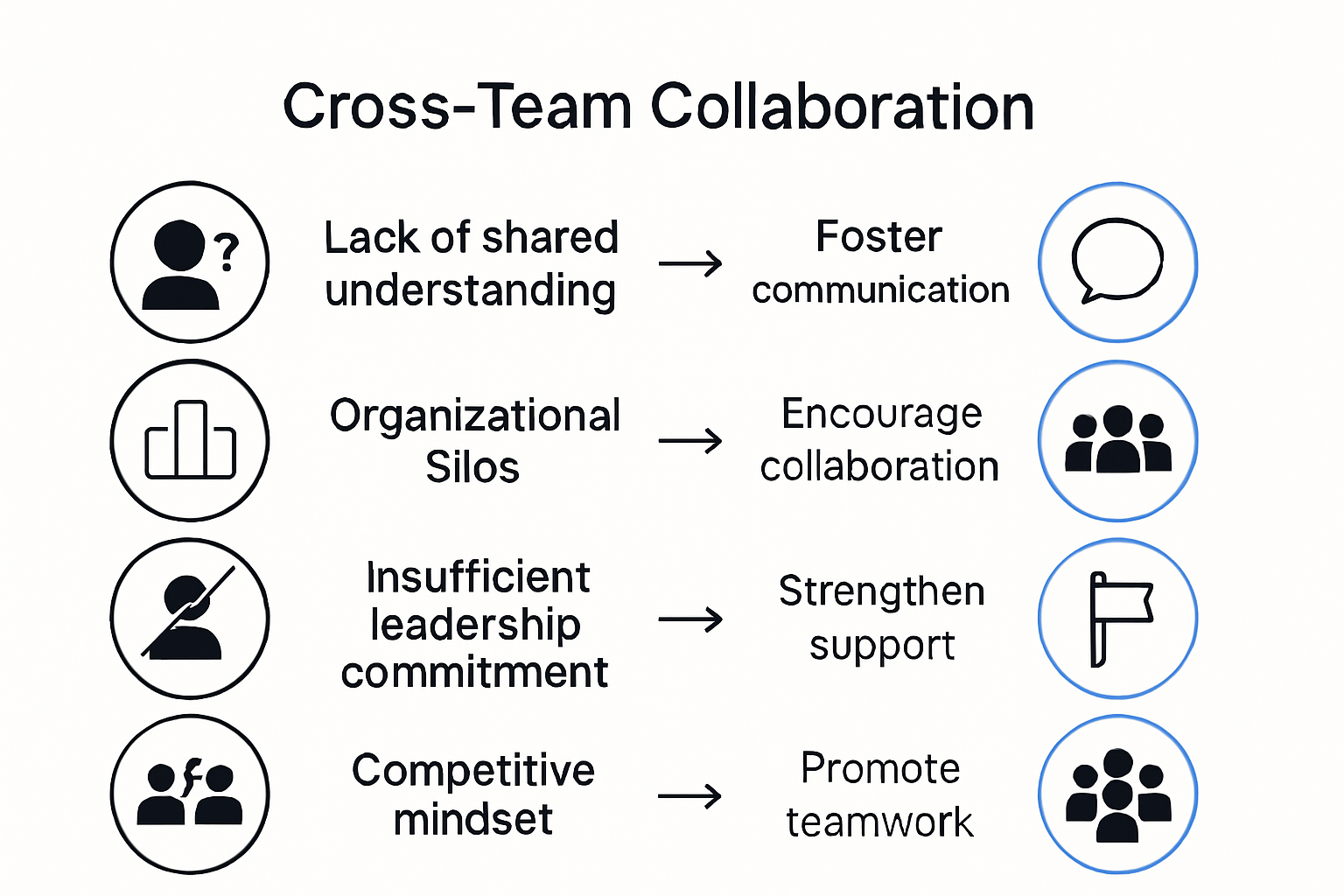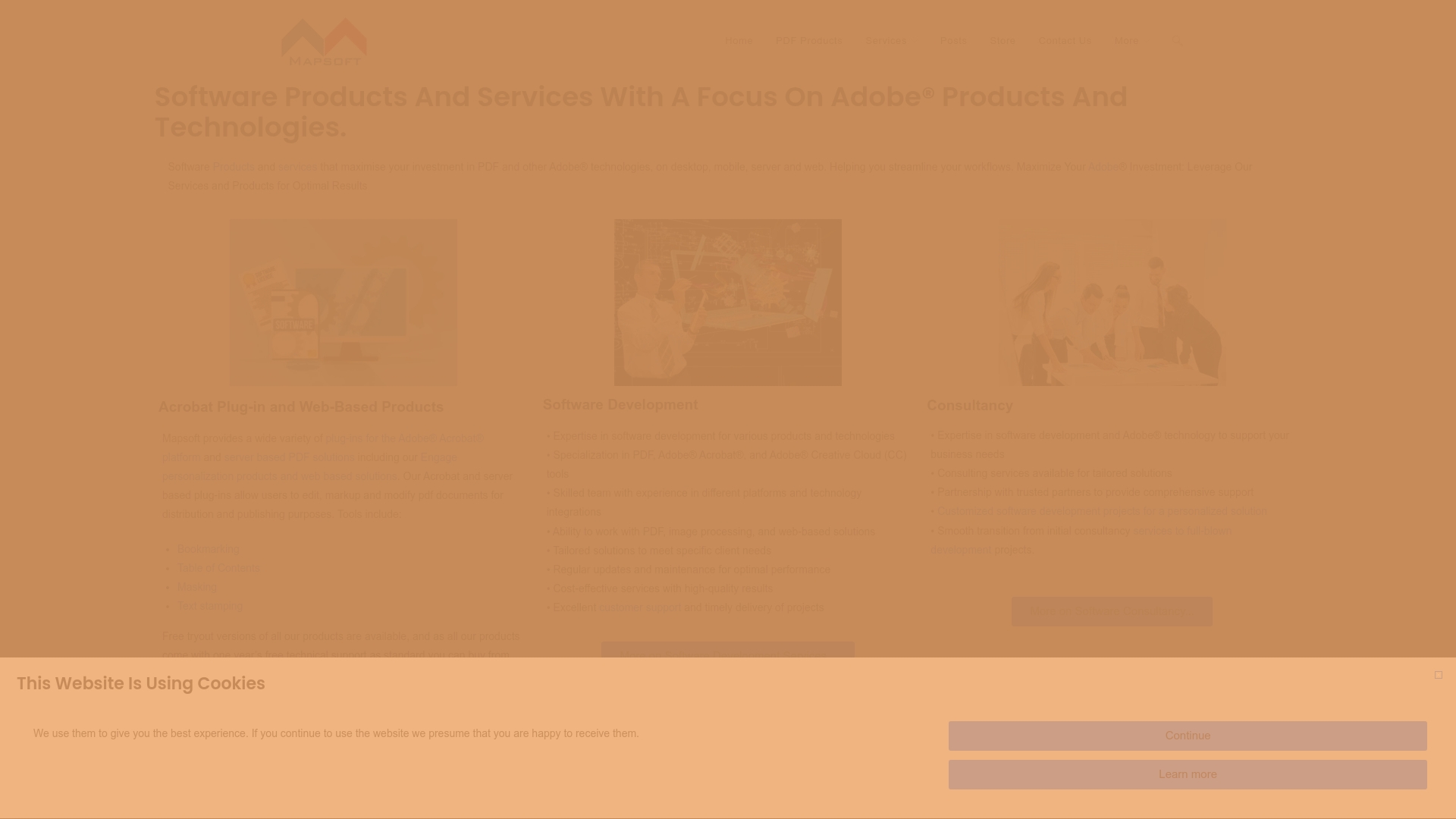Teams solving complex problems together are changing the way businesses succeed. Suddenly, it is no longer just about one person’s ideas or one department’s skills. Studies show that collaborative workplaces see 73 percent higher quality work and 60 percent more innovation. And the real surprise is that the right tools and strategies can help teams break down silos faster than anyone thought possible. Teams are discovering that creative solutions thrive where different minds meet and share—even when those minds are scattered across remote offices or time zones.
Table of Contents
- Key Benefits Of Collaboration Across Teams
- Adobe Solutions For Seamless Teamwork
- Best Practices For Managing Pdf Workflows
- Overcoming Challenges In Cross-Team Collaboration
Quick Summary
| Takeaway | Explanation |
|---|---|
| Boost innovation through diverse teamwork | Collaborating across teams brings unique perspectives, leading to innovative solutions that wouldn’t emerge in isolation. |
| Enhance communication for efficiency | Improved interdepartmental communication eliminates redundancies, streamlines workflows, and accelerates decision-making. |
| Implement structured PDF workflows | Standardizing document organization and version control improves searchability and collaboration, reducing errors and time spent finding files. |
| Address collaborative barriers proactively | Identifying and overcoming barriers like silos and misaligned objectives enhances interdepartmental cooperation and overall effectiveness. |
| Invest in collaborative tools and culture | Leveraging the right technologies and fostering a supportive culture are crucial for successful cross-functional teamwork and innovation. |
Key Benefits of Collaboration Across Teams
Collaboration across teams transforms how organizations approach complex challenges and drive innovation. By breaking down traditional departmental barriers, businesses unlock powerful opportunities for growth and problem solving.
Enhanced Problem Solving and Innovation
Team collaboration brings together diverse perspectives and expertise, creating a dynamic environment for breakthrough solutions. Research from Deloitte reveals that collaborative workplaces experience significant advantages: 73% of employees produce higher quality work, and 60% demonstrate increased innovation when working together.
Professionals from different departments bring unique skill sets and viewpoints. An IT specialist might approach a challenge differently from a marketing professional, and when these perspectives intersect, remarkable solutions emerge. This cross-pollination of ideas generates creative strategies that individual teams might never conceive independently.
Improved Communication and Efficiency
Effective collaboration dramatically improves organizational communication and workflow efficiency. When teams share information transparently, redundant efforts are eliminated, and knowledge transfer becomes seamless. Collaborative research indicates that interdepartmental cooperation helps organizations develop more comprehensive problem-solving approaches.
Communication barriers often create bottlenecks in organizational processes. By establishing robust collaboration frameworks, companies can streamline decision making, reduce misunderstandings, and accelerate project timelines. Teams that communicate effectively can respond more quickly to market changes and internal challenges.
Professional Development and Learning
Collaboration serves as a powerful mechanism for continuous learning and professional growth. When employees interact across departments, they gain exposure to different skills, methodologies, and perspectives. Experts suggest that collaborative environments provide a safety net for exploring innovative ideas that might initially seem unconventional.
Employees develop broader skill sets by working with colleagues from varied backgrounds. A marketing professional might learn technical insights from an IT team member, while a technical specialist gains communication and strategic planning skills from marketing colleagues. This cross-functional learning enhances individual capabilities and strengthens the overall organizational talent pool.
Ultimately, collaboration across teams is not just a workplace strategy but a fundamental approach to modern business success. By creating environments that encourage open communication, knowledge sharing, and mutual respect, organizations can unlock unprecedented levels of creativity, efficiency, and innovation.
Adobe Solutions for Seamless Teamwork
To help readers quickly compare Adobe’s collaborative solutions, the following table summarizes the key features and benefits of each main Adobe platform discussed in the article.
| Adobe Solution | Key Features | Main Benefits |
|---|---|---|
| Experience Manager Assets | Centralized content repository, Permissions, Version control | Streamlined creation & distribution, Consistency, Reduced redundant work |
| Adobe Connect | Persistent collaboration spaces, Video conferencing, Real-time document sharing | Continuous communication, Remote/hybrid support, Project momentum |
| Adobe Research | Interdisciplinary teams, Academic partnerships, Industry-leading research | Innovative tools, Tailored to real-world collaboration needs |
Adobe offers comprehensive digital solutions designed to transform how teams collaborate, communicate, and create across complex organizational environments. By leveraging advanced technologies and integrated platforms, businesses can overcome traditional collaboration barriers and achieve unprecedented productivity.
Centralized Content Management
Adobe Experience Manager Assets provides organizations with a powerful centralized management platform that streamlines content creation and distribution. This solution enables teams to configure content changes that automatically propagate across all published channels, ensuring consistency and reducing redundant work. Content creators can dramatically reduce repository costs while maintaining high-quality experiences across multiple devices and communication channels.
The platform supports seamless collaboration by allowing multiple team members to access, edit, and review content simultaneously. Permissions and version control features ensure that every team member works with the most up-to-date materials, preventing potential miscommunications or conflicting edits.
Advanced Collaboration Platforms
Adobe Connect emerges as a robust solution for persistent collaboration spaces. Unlike traditional communication tools, it supports ongoing situational awareness across different locations and organizational levels. Teams can maintain continuous communication channels, share information instantly, and maintain project momentum regardless of physical distance.
The platform integrates various communication modalities, allowing video conferencing, screen sharing, interactive presentations, and real-time document collaboration. This comprehensive approach ensures that team members can interact effectively, whether they are working remotely or in hybrid environments. You can explore advanced workflow automation techniques to further enhance your team’s collaborative capabilities.
Research-Driven Innovation
Adobe Research represents a critical component of the company’s collaborative ecosystem. Comprising world-class scientists, engineers, artists, and designers, this team bridges academic discovery with industry innovation. By collaborating with universities worldwide and presenting publications at international conferences, Adobe continually pushes the boundaries of content and data intelligence technologies.
Their interdisciplinary approach ensures that Adobe’s solutions are not just technologically advanced but also deeply understanding of real-world collaboration challenges. This commitment to research translates into tools that are intuitive, powerful, and specifically designed to address the complex communication needs of modern organizations.
By integrating these advanced solutions, businesses can create more agile, responsive, and interconnected work environments. Adobe’s collaborative technologies go beyond simple communication tools they represent a holistic approach to transforming how teams think, create, and achieve collective goals.
Best Practices for Managing PDF Workflows
Effective PDF workflow management is critical for organizations seeking to optimize document processes, enhance collaboration, and maintain information integrity. By implementing strategic approaches, teams can transform their document handling from a potential bottleneck into a streamlined, efficient system.
Document Organization and Naming Conventions
Research from TechTarget emphasizes the importance of consistent file naming and metadata conventions to enhance document searchability and organization. Establishing clear, standardized naming protocols helps teams quickly locate and identify documents, reducing time spent searching and minimizing potential errors.
Key strategies for effective document organization include:
- Consistent Prefix: Use department or project-specific prefixes
- Date Formatting: Implement a standard date format (YYYYMMDD)
- Version Control: Include version numbers in file names
- Descriptive Elements: Add brief, meaningful descriptions
You can learn more about creating optimized searchable PDFs to further enhance your workflow efficiency.
Collaboration and Version Control
ELQN highlights the critical need for real-time document collaboration and version control to facilitate teamwork and maintain document integrity. Modern PDF workflows require robust systems that track changes, manage concurrent editing, and provide clear audit trails.
Implementing comprehensive version control allows teams to:
- Track Document History: Monitor all modifications and edits
- Restore Previous Versions: Recover earlier document states if needed
- Manage Access Permissions: Control who can view or modify documents
- Synchronize Across Platforms: Ensure consistent document access
Accessibility and Format Considerations
The following table provides a checklist of best practices for managing PDF workflows, helping teams evaluate if their current processes align with key recommendations discussed in the article.
| Best Practice | Description |
|---|---|
| Consistent File Naming | Use department/project prefixes and standard date formats |
| Version Control | Track changes, restore versions, audit trails |
| Access Permissions | Control and manage document editing/viewing rights |
| Descriptive Metadata | Add meaningful descriptions to improve searchability |
| OCR Implementation | Enable text searchability in PDFs |
| Proper Tagging | Ensure compatibility with screen readers |
| Compression Techniques | Reduce file size while maintaining quality |
Yale School of Medicine advises careful consideration of document formats, particularly when creating web-accessible content. While PDFs are excellent for preserving formatting, they can present challenges for accessibility and user experience.
To optimize PDF workflows, consider:
- Optical Character Recognition (OCR): Enable text searchability
- Proper Tagging: Ensure screen reader compatibility
- Responsive Design: Create PDFs that adapt to different devices
- Compression Techniques: Maintain document quality while reducing file size
By adopting these best practices, organizations can create more efficient, collaborative, and accessible PDF workflows. The key is to view document management as a dynamic process that requires continuous refinement and adaptation to changing technological landscapes.

Overcoming Challenges in Cross-Team Collaboration
Cross-team collaboration presents complex organizational challenges that require strategic approaches and deliberate interventions. Understanding and addressing these barriers is crucial for creating a cohesive, high-performing workplace environment.
Identifying Collaborative Barriers
Research from Innovative Human Capital reveals four primary obstacles to effective cross-functional collaboration: lack of shared understanding between departments, organizational silos creating competitive mindsets, insufficient leadership commitment, and individual perspectives that view other functions as competitors.
These barriers manifest through communication breakdowns, misaligned objectives, and resistance to interdepartmental cooperation. Teams often struggle with different professional languages, conflicting priorities, and ingrained departmental cultures that discourage open exchange of ideas. Recognizing these challenges is the first step toward developing targeted strategies to overcome them.

Communication and Cultural Alignment
MIT Sloan Management Review emphasizes the critical need for managers to develop skills in navigating diverse communication styles and professional norms. This requires creating environments that value understanding, empathy, and mutual respect across different functional domains.
Strategies for improving cross-team communication include:
- Shared Language Development: Create common terminology and frameworks
- Regular Cross-Functional Meetings: Establish consistent interaction opportunities
- Collaborative Goal Setting: Develop objectives that require interdepartmental cooperation
- Cultural Exchange Programs: Implement temporary role rotations
Technological and Structural Solutions
National Center for Biotechnology Information research highlights the significant impact of organizational decisions on virtual collaboration. Factors such as incentive structures, organizational culture, and project design critically affect communication and coordination in distributed teams.
Leadership plays a pivotal role in facilitating collaboration by:
- Investing in collaborative technologies
- Redesigning organizational structures to reduce siloed thinking
- Creating reward systems that incentivize cross-team cooperation
- Providing training and support for effective remote collaboration
Successful cross-team collaboration requires a holistic approach that addresses technological, cultural, and human factors. Organizations must commit to continuous learning, adaptability, and a culture that genuinely values diverse perspectives and collective achievement.
Frequently Asked Questions
What are the key benefits of cross-team collaboration?
Cross-team collaboration enhances problem solving and innovation, improves communication and efficiency, and fosters professional development and learning by bringing together diverse perspectives and expertise.
How can Adobe tools facilitate collaboration between teams?
Adobe offers solutions like Experience Manager Assets for centralized content management and Adobe Connect for advanced collaboration platforms, enabling seamless communication and document sharing among team members across different locations.
What best practices should teams follow for managing PDF workflows?
Best practices for managing PDF workflows include establishing consistent document organization and naming conventions, implementing version control for collaborative editing, and ensuring accessibility features like OCR and proper tagging.
How can organizations overcome challenges in cross-team collaboration?
Organizations can overcome collaboration challenges by identifying barriers, improving communication and cultural alignment, and investing in technological solutions that facilitate cooperation across different teams.
Unlock Effortless Team Collaboration and Advanced PDF Workflows with Mapsoft
Are your teams struggling to keep up with the demands of cross-departmental collaboration, document version control, and the growing complexity of PDF workflows highlighted in your 2025 strategy? The article shows how breaking down silos and adopting smarter PDF management is essential for innovation and efficiency, but finding the right tools can feel overwhelming. Mapsoft is here to bridge the gap between Adobe’s collaboration vision and the real workflow automation your organization needs.

With Mapsoft, you gain more than software. You secure a comprehensive suite of specialized PDF tools and workflow solutions that integrate seamlessly with Adobe® technologies. Optimize your team’s productivity with professional plug-ins, advanced document automations, cloud-based PDF conversion and manipulation, and scalable API platforms. Discover how organizations like yours accelerate cross-team success by turning collaborative best practices into effortless, error-free processes. Visit mapsoft.com now and claim the productivity edge to transform your 2025 collaboration strategy into a reality today.
Recommended
- ExtendScript – Mapsoft
- Automating Workflow with Adobe Acrobat’s Actions
- Adobe Acrobat for Architects and Engineers: A Tool for Success
- The Evolution of Adobe Illustrator and Its History: adobe illustrator history
- Teamkommunikation verbessern: Erfolgreiche Zusammenarbeit für 2025
- Effective Online Collaboration for Aviation Professionals



